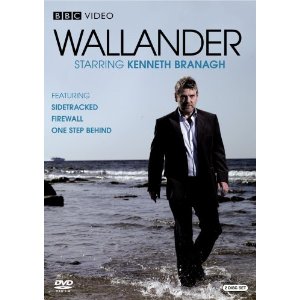Movies |
Wallander
By
Published: Oct 06, 2015
Category:
Drama
The woman who had recommended State of Play, a mesmerizing six hours of BBC drama, had a new enthusiasm to share: “Wallander.”
Readers of crime fiction surely know the name. Kurt Wallander is a detective created by the Swedish writer Henning Mankell. He is beloved, and not just in Sweden — Mankell has sold more than 30 million books. (A good start: “The Pyramid: The First Wallander Cases.” To buy the paperback from Amazon, click here. For the Kindle edition, click here.)
I haven’t read any Mankell. I have seen all six 90-minute episodes of the BBC series starring Kenneth Branagh. A very different experience from “State of Play,” which we gulped down in a two-evening marathon. “Wallander” is deep, slow, heavy — one episode a night was all we could bear. But we cleared our evenings for a week to bear them, for “Wallander” is beautiful to look at, brilliantly plotted (though Mankell fans, I’m told, don’t quite love the changes from the books), and satisfying on a very deep level.
And then there is the not inconsequential presence of a Kenneth Branagh you’ve never seen before. Here, he’s unshaven, quasi-diabetic, pudgy as Phillip Seymour Hoffman, socially and psychologically isolated — a tormented, tragic figure.
The series is set is Ystad a small city — population: 18,000 — on the southern coast of Sweden. Once it was charming here. It still is. On the surface. But drugs have entered by sea. And immigrants, mostly from Iraq, have changed the character of Sweden. Now there is intolerance. And crime. And a nagging question: “Why is Sweden changing? Can we get our country back?”
The series is divided into two DVDs, each with three episodes. The format of all the episodes is the same, and if you are a “Law & Order” addict, you will smile at the way each begins. In the first series: A girl sets herself aflame as Wallander approaches. Two teenage girls commit an inexplicable murder. A gunman kills three young people celebrating Midsummer’s Eve in the woods. Then there’s evocative theme music over the credits. And we’re off. (To buy the first series from Amazon, click here. To watch episode #1 right now, click here. To watch all of Season 1 now, click here.)
An irrational crime is Wallender’s specialty. Slowly, working mostly alone, he gathers some clues. Here he follows out his best clue — he goes to an island hideaway to interview a friend of the murder victims, a young woman who might well have been at their party.
This remarkable scene — Wallander with a young woman who is the same age as his daughter — is just so rich. I can’t recall when I’ve seen a media cop who takes his work so personally, who has been at it for decades and still takes every death as if it were the first. It’s painful to watch, and a great pleasure.
Season two is just as satisfying. The murder of an elderly couple leads to a crusade against foreigners. A friend asks Wallander for help, is refused, and turns up dead. And then there is a killer with a taste for torture. (To buy the DVD of the second season from Amazon, click here.)
I don’t want to make this sound like an existentialist cop show. There’s action here. And surprise. And some quite extraordinary violence. Let’s look at the climax of one episode. Wallander has started an actual romance. With the wrong woman, of course — she turns out to be part of the criminal conspiracy. And then she gets killed: another woman dying as Wallander watches helplessly. In this scene, Wallander finds her killer.
Stunned? I was. But I was equally stunned by images of birds flying south, golden fields, rocky landscapes. From beginning to end, “stunning” is the word for “Wallander.”
BONUS:Emily Barker & The Red Clay Halo sing “Nostalgia,” the theme song for the series


